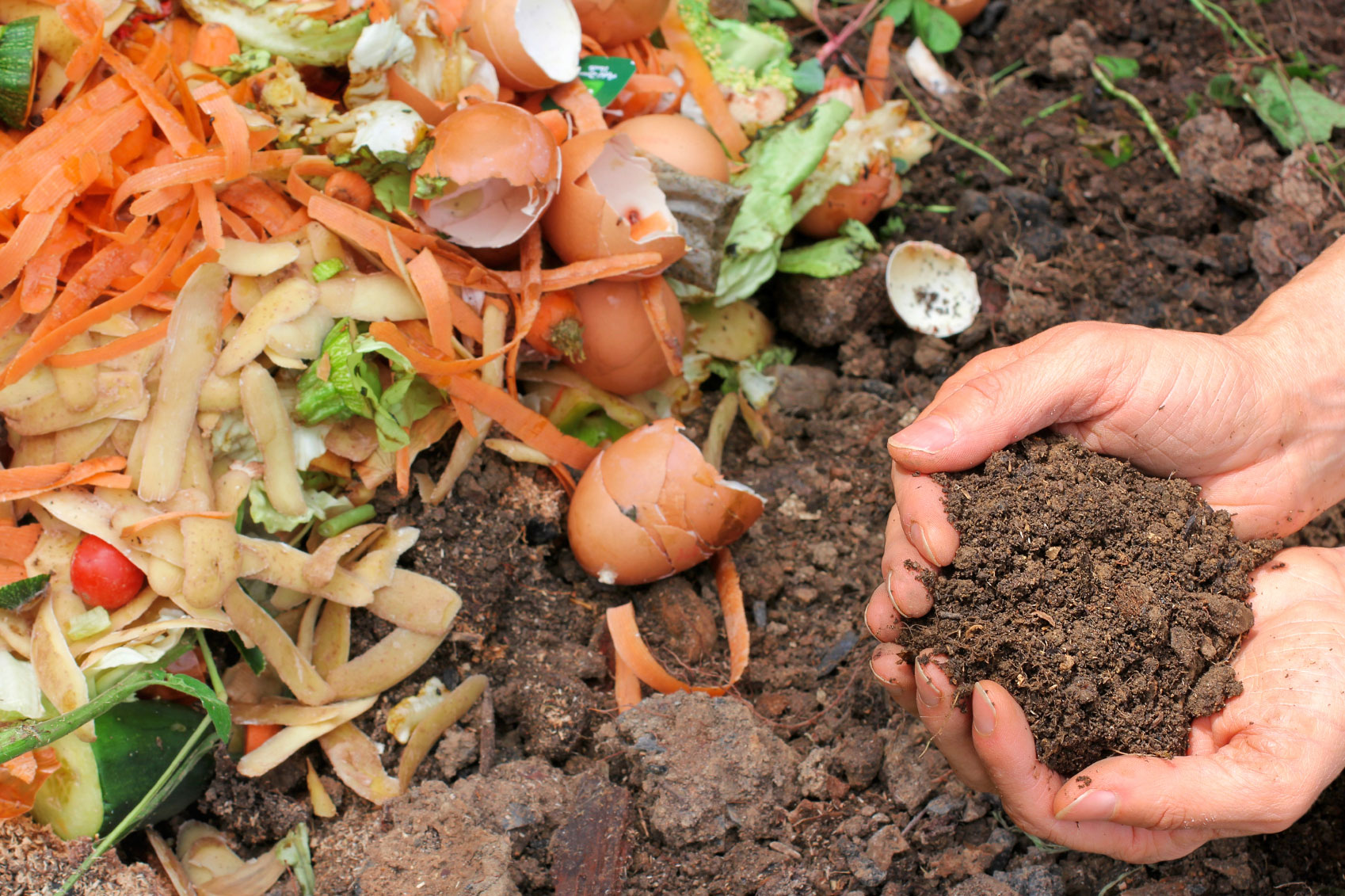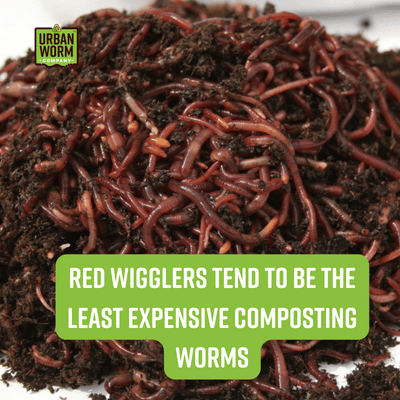Exploring the Systems of Red Wiggler Composting: A Comprehensive Overview to the Process and Its Positive Influence On Sustainable Horticulture Practices
The intricate devices of red wiggler composting, utilizing the one-of-a-kind physiology of Eisenia fetida, provide a compelling method for improving lasting horticulture methods. As metropolitan horticulture gains grip, understanding the subtleties of this composting approach becomes increasingly appropriate.
Understanding Red Wigglers
Red wigglers, clinically called Eisenia fetida, are a types of earthworm very concerned for their performance in composting organic waste. These worms grow in nutrient-rich settings, specifically in rotting organic matter, making them perfect for vermicomposting systems - Red Wiggler Composting. Identified by their reddish-brown coloration and segmented bodies, red wigglers are smaller sized than typical earthworms, generally gauging between three to four inches in size
Their one-of-a-kind physical attributes boost their composting capabilities; for circumstances, they have a high reproductive price, permitting populaces to increase quickly under ideal conditions. Red wigglers take in organic product, breaking it down through their digestive systems, which leads to nutrient-rich castings that serve as a superb organic plant food. Their starved appetite allows them to process large volumes of food waste effectively, dramatically reducing land fill payments.
Along with their composting expertise, red wigglers play a crucial role in soil wellness. Red Wiggler Composting. They freshen the soil and help with the decay of raw material, additional enriching the soil ecosystem. Understanding the attributes and environmental benefits of red wigglers is vital for any individual wanting to execute sustainable gardening practices with reliable composting methods
The Composting Refine
The composting process includes breaking down natural products right into nutrient-rich garden compost, a task that red wigglers stand out at as a result of their specialized digestive systems. These worms consume food scraps, backyard waste, and other raw material, transforming them into valuable compost with a collection of chemical and organic procedures.
Initially, the natural matter is blended with bedding products such as shredded paper or dried leaves, developing an ideal atmosphere for the worms. As the red wigglers consume this mixture, they simplify via their intestine, where bacteria further disintegrate the material. This process generates warm, advertising microbial task, which speeds up decomposition.

Advantages of Red Wiggler Composting
Eco-conscious people and numerous gardeners acknowledge the various benefits of red wiggler composting, making it a prominent option for reliable waste administration. One of the main advantages is its ability to dramatically decrease organic waste in garbage dumps - Red Wiggler Composting. Red wigglers successfully break down cooking area scraps and other eco-friendly products, transforming them into nutrient-rich vermicompost that enhances soil health
In addition, red wiggler composting enhances dirt framework and fertility. The resulting vermicompost is bursting with useful microbes, which advertise plant development and enhance nutrient retention. This all-natural fertilizer not just supports lasting horticulture techniques yet also lowers reliance on chemical plant foods, fostering a much healthier community.
Furthermore, red wiggler composting is a space-efficient approach, making it optimal for urban gardeners with limited space. The procedure can be carried out indoors or outdoors, enabling for year-round composting no matter of environment problems. Red wigglers are low-maintenance microorganisms that require marginal read this post here care, making them accessible for novice gardeners.
Basically, the advantages of red wiggler composting expand past waste decrease; they add to healthier dirts, sustainable horticulture methods, and ecological stewardship, positioning it as a useful method in modern horticulture.
Finest Practices for Composting
For effective red wiggler composting, adhering to ideal methods is important to make best use of effectiveness and guarantee a productive setting for these worms. This balance promotes optimum decomposition and boosts the worms' wellness.
Next, screen wetness levels, original site going for a wet, sponge-like uniformity. Overly wet conditions can cause anaerobic decomposition, while excessive dry skin might prevent worm activity. Furthermore, ensure correct oygenation by turning the garden compost on a regular basis, which aids protect against compaction and permits for adequate oxygen circulation.
Temperature is an additional important element. Preserve a variety of 55 ° F to 77 ° F(13 ° C to 25 ° C) to advertise worm task and microbial growth. Ultimately, avoid presenting meat, dairy, and oily foods, as these can draw in pests and develop smells.
Enhancing Lasting Gardening
Sustainable horticulture symbolizes an all natural strategy that integrates ecological principles with functional horticulture techniques. By including approaches such as red wiggler composting, gardeners can substantially enhance their practices, cultivating an extra resistant environment. Red wigglers, renowned for their efficient decay abilities, transform natural waste right into nutrient-rich compost, therefore improving the soil without depending on chemical plant foods.
Applying sustainable horticulture strategies, such as crop turning, buddy growing, and mulching, additional enhances the advantages of composting. These practices not only boost dirt structure and fertility however also advertise biodiversity, bring in advantageous pests and organisms that add to grow health and wellness. Utilizing indigenous plants can decrease water consumption and reduce upkeep, aligning with water conservation initiatives.

Final Thought
To conclude, red wiggler composting stands for an important approach for enhancing sustainable gardening practices. The efficient food digestion of organic waste by Eisenia fetida not only generates nutrient-rich vermicompost yet additionally cultivates better dirt health and framework. By advertising cardio disintegration, this method decreases smells and waste while lowering dependency on chemical fertilizers. Inevitably, the adoption of red wiggler composting can dramatically add to eco-friendly horticulture, benefitting both metropolitan and beginner gardeners in their cultivation initiatives.
The complex visit this page mechanisms of red wiggler composting, using the unique physiology of Eisenia fetida, offer an engaging avenue for improving lasting horticulture practices. Understanding the attributes and ecological benefits of red wigglers is necessary for anybody looking to carry out lasting gardening techniques with effective composting methods.

In verdict, red wiggler composting represents a crucial technique for boosting sustainable horticulture practices. Ultimately, the adoption of red wiggler composting can significantly add to environmentally friendly horticulture, profiting both urban and novice garden enthusiasts in their farming initiatives.